#Nova-C lander
Text


The United States has returned to the lunar surface for the first time in more than 50 years after a privately-built spacecraft named Odysseus capped a nail-biting 73-minute descent from orbit with a touchdown near the moon’s south pole.
Amid celebrations of what NASA hailed “a giant leap forward,” there was no immediate confirmation of the status or condition of the lander, other than it had reached its planned landing site at crater Malapert A.
But later Intuitive Machines, the Texas-based company that built the first commercial craft to land on the moon, said the craft was “upright and starting to send data.”
The statement on X said mission managers were “working to downlink the first images from the lunar surface.”
The so-called “soft landing” on Thursday, which Steve Altemus, the company’s founder, had given only an 80% chance of succeeding, was designed to open a new era of lunar exploration as NASA works towards a scheduled late-2026 mission to send humans back there.
“Welcome to the moon,” Altemus said when touchdown when the 5.23pm touchdown was eventually confirmed, after about 10 minutes in which Odysseus was out of contact.
It was the first time any US-built spacecraft had landed on the moon since NASA’s most recent crewed visit, the Apollo 17 mission in December 1972, and the first visit by commercial vehicle following last month’s failure of Peregrine One, another partnership between the space agency and a private company, Astrobotic.
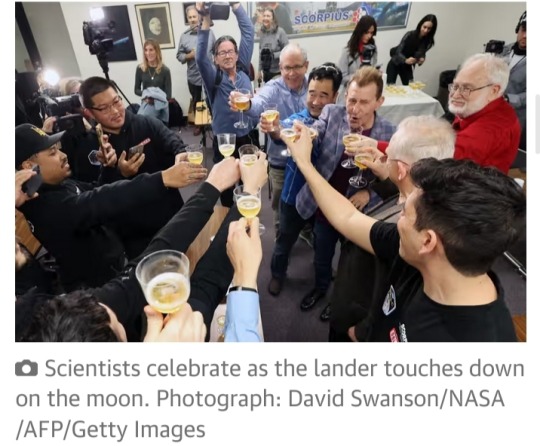
“Today, for the first time in more than a half century, the US has returned to the moon. Today, for the first time in the history of humanity, a commercial company, an American company, launched and led the voyage up there,” Bill Nelson, the NASA administrator, said.
“What a triumph. Odysseus has taken the moon. This feat is a giant leap forward for all of humanity.”
There was no video of Odysseus’s fully autonomous descent, which slowed to about 2.2mph at 33ft above the surface.
But a camera built by students at Florida’s Embry-Riddle Aeronautical University was designed to fall and take pictures immediately before touchdown, and NASA cameras were set to photograph the ground from the spacecraft.
The 14ft (4.3 metres) hexagonal, six-legged Nova-C lander, affectionately nicknamed Odie by Intuitive Machines employees, is part of NASA’s commercial lunar payload services (CLPS) initiative in which the agency awards contracts to private partners, largely to support the Artemis program.
NASA contributed $118m to get it off the ground, with Intuitive Machines funding a further $130m ahead of its February 15 launch from Florida’s Kennedy Space Center on a Falcon 9 rocket from Elon Musk’s SpaceX company.

The IM-1 mission, like the doomed Peregrine effort, is carrying a payload of scientific equipment designed to gather data about the lunar environment, specifically in the rocky region chosen as the landing site for NASA’s crewed Artemis III mission planned for two years’ time.
It is a hazardous area – “pockmarked with all of these craters,” according to Nelson – but chosen because it is believed to be rich in frozen water that could help sustain a permanent lunar base crucial to future human missions to Mars.
Scientists announced last year that they believed tiny glass beads strewn across the moon’s surface contained potentially “billions of tonnes of water” that could be extracted and used on future missions.
The risks are worth it, Nelson told CNN on Thursday, “to see if there is water in abundance. Because if there’s water, there’s rocket fuel: hydrogen, and oxygen. And we could have a gas station on the south pole of the moon.”
The planned operational life of the solar powered lander is only seven days, before the landing site about 186 miles from the moon’s south pole moves into Earth’s shadow.
But NASA hopes that will be long enough for analysis of how soil there reacted to the impact of the landing.
Other instruments will focus on space weather effects on the lunar surface, while a network of markers for communication and navigation will be deployed.
“Odysseus, powered by a company called Intuitive Machines, launched upon a SpaceX rocket, carrying a bounty of NASA scientific instruments, is bearing the dream of a new adventure in science, innovation, and American leadership in space,” Nelson said.
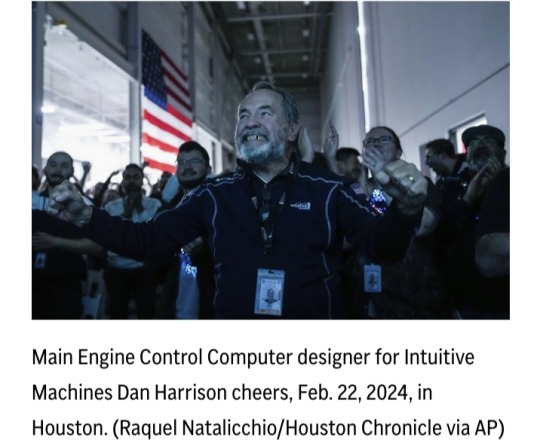
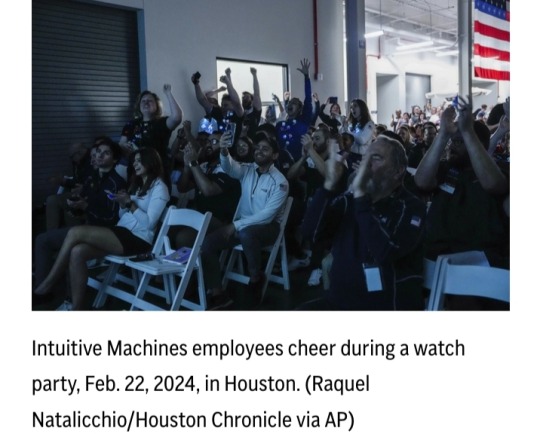
Through Artemis, NASA’s return-to-the-moon program that also has longer-term visions of crewed missions to Mars within the next two decades, the US seeks to stay ahead of Russia and China, both of which are planning their own human lunar landings.
Only the US has previously landed astronauts in six Apollo missions between 1969 and 1972, while five countries have placed uncrewed spacecraft there.
Japan joined the US, Russia, China, and India last month when its Smart Lander for Investigating the Moon (Slim) made a successful, if awkward touchdown after a three-month flight.
Two further Intuitive Machines launches are scheduled for later this year, including an ice drill to extract ingredients for rocket fuel, and another Nova-C lander containing a small Nasa rover and four small robots that will explore surface conditions.
https://www.theguardian.com/science/2024/feb/22/us-moon-landing-odysseus-intuitive-machines
youtube
US returns to lunar surface with for first time in over 50 years
23 February 2024
A spacecraft built and flown by Texas-based company Intuitive Machines landed near the south pole of the moon, the first US touchdown on the lunar surface in more than half a century, and the first ever achieved entirely by the private sector.
Communication with Odysseus seemed be lost during the final stages of the landing, leaving mission control uncertain as to the precise condition and position of the lander, according to flight controllers heard in the webcast.
US returns to lunar surface for first time in over 50 years: ‘Welcome to the moon.’
#Odysseus#Intuitive Machines#Youtube#NASA#Malapert A#moon#moon landing#spacecraft#Steve Altemus#lunar exploration#Bill Nelson#Nova-C lander#Odie#commercial lunar payload services (CLPS)#Artemis#Kennedy Space Center#Falcon 9#Elon Musk#SpaceX#IM-1 mission#Smart Lander for Investigating the Moon (SLIM)#lunar lander#earth
22 notes
·
View notes
Text

It was the afternoon in the USA when Intuitive Machines' Nova-C Odysseus lander attempted its Moon landing in the Malapert A crater. It was an autonomous maneuver that constituted the crucial step of the IM-1 mission. It took about 10 minutes to receive the first faint signals from Odysseus but they were invaluable in confirming the Moon landing. At Intuitive Machines' mission control center, work began to have regular communications that allow them to understand Odysseus' exact status and receive the data collected, including images.
0 notes
Text
SpaceX Scheduled to Launch Private Lunar Lander to the Moon on Valentine’s Day
Intuitive Machines is ready to deploy its inaugural Nova-C class lunar lander onto the surface of the Moon.
Scheduled as part of NASA’s Commercial Lunar Payload Services (CLPS) initiative and the Artemis campaign, the mission is set to launch no earlier than 12:57 a.m. on Wednesday, February 14, 2024.

The staggering launch is slated to occur from Launch Complex 39A at NASA’s Kennedy Space Center in Florida, utilizing a SpaceX Falcon 9 rocket.
To Read More Click here...
#space x#Valentine’s Day#Moon#lunar lander#spacecraft#NASA#Falcon 9#February 14th#Nova-C#IM-1 mission
0 notes
Photo

2024 March 2
Odysseus on the Moon
Image Credit: Intuitive Machines
Explanation: Methalox rocket engine firing, Odysseus' landing legs absorb first contact with the lunar surface in this wide-angle snapshot from a camera on board the robotic Intuitive Machines Nova-C moon lander. Following the landing on February 22, broken landing legs, visible in the image, ultimately left the lander at rest but tilted. Odysseus' gentle lean into a sloping lunar surface preserved the phone booth-sized lander's ability to operate, collect solar power, and return images and data to Earth. Its exact landing site in the Moon's far south polar region was imaged by NASA's Lunar Reconnaissance Orbiter. Donated by NASA, the American flag seen on the lander's central panel is 1970 Apollo program flight hardware.
∞ Source: apod.nasa.gov/apod/ap240302.html
72 notes
·
View notes
Text

NASA Artemis science, first intuitive machines flight head to moon
A suite of NASA science instruments and technology demonstrations is on the way to our nearest celestial neighbor for the benefit of humanity. Through this flight to the moon, they will provide insights into the lunar surface environment and test technologies for future landers and Artemis astronauts.
At 1:05 a.m. EST on Thursday, Intuitive Machines' Nova-C lander launched on a SpaceX Falcon 9 rocket from Launch Complex 39A at the agency's Kennedy Space Center in Florida. At approximately 1:53 a.m., the lander deployed from the Falcon 9 second stage. Teams confirmed it made communications contact with the company's mission operations center in Houston. The spacecraft is stable and receiving solar power.
These deliveries are part of NASA's CLPS (Commercial Lunar Payload Services) initiative and Artemis campaign, which includes new solar system science to better understand planetary processes and evolution, search for evidence of water and other resources, and support long-term human exploration.
"NASA scientific instruments are on their way to the moon—a giant leap for humanity as we prepare to return to the lunar surface for the first time in more than half a century," said NASA Administrator Bill Nelson. "These daring moon deliveries will not only conduct new science at the moon, but they are supporting a growing commercial space economy while showing the strength of American technology and innovation. We have so much to learn through CLPS flights that will help us shape the future of human exploration for the Artemis Generation."
While enroute to the moon, NASA instruments will measure the quantity of cryogenic engine fuel as it is used, and during descent toward the lunar surface, they will collect data on plume-surface interactions and test precision landing technologies.
Once on the moon, NASA instruments will focus on investigating space weather/lunar surface interactions and radio astronomy. The Nova-C lander also will carry retroreflectors contributing to a network of location markers on the moon for communication and navigation for future autonomous navigation technologies.
NASA science aboard the lander includes:
Lunar Node 1 Navigation Demonstrator: A small, CubeSat-sized experiment that will demonstrate autonomous navigation that could be used by future landers, surface infrastructure, and astronauts, digitally confirming their positions on the moon relative to other spacecraft, ground stations, or rovers on the move.
Laser Retroreflector Array: A collection of eight retroreflectors that enable precision laser ranging, which is a measurement of the distance between the orbiting or landing spacecraft to the reflector on the lander. The array is a passive optical instrument and will function as a permanent location marker on the moon for decades to come.
Navigation Doppler Lidar for Precise Velocity and Range Sensing: A Lidar-based (Light Detection and Ranging) guidance system for descent and landing. This instrument operates on the same principles of radar but uses pulses from a laser emitted through three optical telescopes. It will measure speed, direction, and altitude with high precision during descent and touchdown.
Radio Frequency Mass Gauge: A technology demonstration that measures the amount of propellant in spacecraft tanks in a low-gravity space environment. Using sensor technology, the gauge will measure the amount of cryogenic propellant in Nova-C's fuel and oxidizer tanks, providing data that could help predict fuel usage on future missions.
Radio-wave Observations at the Lunar Surface of the Photoelectron Sheath: The instrument will observe the moon's surface environment in radio frequencies, to determine how natural and human-generated activity near the surface interacts with and could interfere with science conducted there.
Stereo Cameras for Lunar Plume-Surface Studies: A suite of four tiny cameras to capture imagery showing how the moon's surface changes from interactions with the spacecraft's engine plume during and after descent.
Intuitive Machines' Nova-C-class lunar lander, named Odysseus, is scheduled to land on the moon's South Pole region near the lunar feature known as Malapert A on Thursday, Feb. 22. This relatively flat and safe region is within the otherwise heavily cratered southern highlands on the side of the moon visible from Earth. Landing near Malapert A will also help mission planners understand how to communicate and send data back to Earth from a location where Earth is low on the lunar horizon.
The NASA science aboard will spend approximately seven days gathering valuable scientific data about Earth's nearest neighbor, helping pave the way for the first woman and first person of color to explore the moon under Artemis.
IMAGE....A SpaceX Falcon 9 rocket carrying Intuitive Machines’ Nova-C lunar lander lifts off from Launch Pad 39A at NASA’s Kennedy Space Center in Florida at 1:05 a.m. EST on Feb. 15, 2024. As part of NASA’s CLPS (Commercial Lunar Payload Services) initiative and Artemis campaign, Intuitive Machines’ first lunar mission will carry NASA science and commercial payloads to the moon to study plume-surface interactions, space weather/lunar surface interactions, radio astronomy, precision landing technologies, and a communication and navigation node for future autonomous navigation technologies. Credit: NASA
11 notes
·
View notes
Link
A SpaceX Falcon 9 rocket carrying Intuitive Machines’ Nova-C lunar lander lifts off from Launch Pad 39A at NASA’s Kennedy Space Center in Florida at 1:05 a.m. EST on Feb. 15, 2024. As part of NASA’s CLPS (Commercial Lunar Payload Services) initiative and Artemis campaign, Intuitive Machines’ first lunar mission will carry NASA science and commercial payloads to the Moon to study plume-surface interactions, space weather/lunar surface interactions, radio astronomy, precision landing technologies, and a communication and navigation node for future autonomous navigation technologies. A suite of NASA science instruments and technology demonstrations is on the way to our nearest celestial neighbor for the benefit of humanity. Through this flight to the Moon, they will provide insights into the lunar surface environment and test technologies for future landers and Artemis astronauts. At 1:05 a.m. EST on Thursday, Intuitive Machines’ Nova-C lander launched on a SpaceX Falcon 9 rocket from Launch Complex 39A at the agency’s Kennedy Space Center in Florida. At approximately 1:53 a.m., the lander deployed from the Falcon 9 second stage. Teams confirmed it made communications contact with the company’s mission operations center in Houston. The spacecraft is stable and receiving solar power. These deliveries are part of NASA’s CLPS (Commercial Lunar Payload Services) initiative and Artemis campaign, which includes new solar system science to better understand planetary processes and evolution, search for evidence of water and other resources, and support long-term human exploration. “NASA scientific instruments are on their way to the Moon – a giant leap for humanity as we prepare to return to the lunar surface for the first time in more than half a century,” said NASA Administrator Bill Nelson. “These daring Moon deliveries will not only conduct new science at the Moon, but they are supporting a growing commercial space economy while showing the strength of American technology and innovation. We have so much to learn through CLPS flights that will help us shape the future of human exploration for the Artemis Generation.” While enroute to the Moon, NASA instruments will measure the quantity of cryogenic engine fuel as it is used, and during descent toward the lunar surface, they will collect data on plume-surface interactions and test precision landing technologies. Once on the Moon, NASA instruments will focus on investigating space weather/lunar surface interactions and radio astronomy. The Nova-C lander also will carry retroreflectors contributing to a network of location markers on the Moon for communication and navigation for future autonomous navigation technologies. NASA science aboard the lander includes: Lunar Node 1 Navigation Demonstrator: A small, CubeSat-sized experiment that will demonstrate autonomous navigation that could be used by future landers, surface infrastructure, and astronauts, digitally confirming their positions on the Moon relative to other spacecraft, ground stations, or rovers on the move. Laser Retroreflector Array: A collection of eight retroreflectors that enable precision laser ranging, which is a measurement of the distance between the orbiting or landing spacecraft to the reflector on the lander. The array is a passive optical instrument and will function as a permanent location marker on the Moon for decades to come. Navigation Doppler Lidar for Precise Velocity and Range Sensing: A Lidar-based (Light Detection and Ranging) guidance system for descent and landing. This instrument operates on the same principles of radar but uses pulses from a laser emitted through three optical telescopes. It will measure speed, direction, and altitude with high precision during descent and touchdown. Radio Frequency Mass Gauge: A technology demonstration that measures the amount of propellant in spacecraft tanks in a low-gravity space environment. Using sensor technology, the gauge will measure the amount of cryogenic propellant in Nova-C’s fuel and oxidizer tanks, providing data that could help predict fuel usage on future missions. Radio-wave Observations at the Lunar Surface of the Photoelectron Sheath: The instrument will observe the Moon’s surface environment in radio frequencies, to determine how natural and human-generated activity near the surface interacts with and could interfere with science conducted there. Stereo Cameras for Lunar Plume-Surface Studies: A suite of four tiny cameras to capture imagery showing how the Moon’s surface changes from interactions with the spacecraft’s engine plume during and after descent. Intuitive Machines’ Nova-C-class lunar lander, named Odysseus, is scheduled to land on the Moon’s South Pole region near the lunar feature known as Malapert A on Thursday, Feb. 22. This relatively flat and safe region is within the otherwise heavily cratered southern highlands on the side of the Moon visible from Earth. Landing near Malapert A will also help mission planners understand how to communicate and send data back to Earth from a location where Earth is low on the lunar horizon. The NASA science aboard will spend approximately seven days gathering valuable scientific data about Earth’s nearest neighbor, helping pave the way for the first woman and first person of color to explore the Moon under Artemis. Learn more about NASA’s CLPS initiative at: https://www.nasa.gov/clps -end- Karen Fox / Alise FisherHeadquarters, Washington202-358-1600 / [email protected] / [email protected] Nilufar RamjiJohnson Space Center, [email protected] Antonia JaramilloKennedy Space Center, [email protected] Share Details Last Updated Feb 15, 2024 LocationNASA Headquarters Related TermsMissionsArtemisCommercial Lunar Payload Services (CLPS)
3 notes
·
View notes
Text
The Marshall Star for February 28 2024
NASA Tech Contributes to Soft Moon Landing For the first time in more than 50 years, new NASA science instruments and technology demonstrations are operating on the Moon following the first successful delivery of the agency’s CLPS (Commercial Lunar Payload Services) initiative. Intuitive Machines’ Nova-C lander, called Odysseus, completed a seven-day journey to lunar orbit […]
from NASA https://ift.tt/rO6huoC
2 notes
·
View notes
Text
"Houston, Odysseus has found his new home."
Odysseus passes over the near side of the Moon following lunar orbit insertion on 21FEB2024. The lander continues to be in excellent health in lunar orbit.
Intuitive Machines has confirmed that the IM-1 Nova-C class lunar lander “Odysseus” touched down on the surface of the Moon today, sometime around 6:30 PM EST. The exact time of touchdown is not yet known, as the company has not yet…
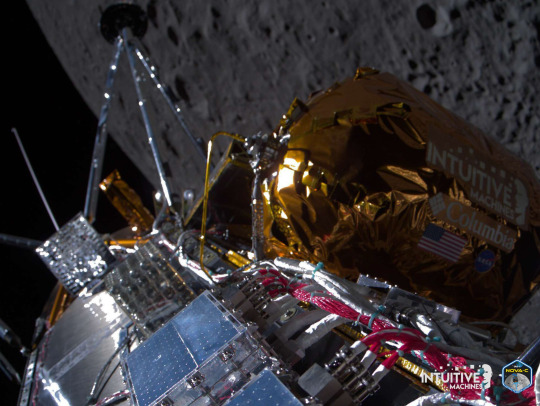
View On WordPress
2 notes
·
View notes
Text
8 Stocks to Invest in the Future of Space Exploration
Space, often referred to as the “great unknown” or the “final frontier,” has long captivated humanity’s imagination and ambition. The allure of exploring beyond our earthly confines has propelled us to remarkable achievements. The narrative of space exploration is dotted with significant milestones, including the United States’ Apollo 11 mission, which marked the first human footsteps on the moon in 1969, and the Soviet Union’s pioneering achievement of sending the first man into space. Nations worldwide have contributed to this ongoing saga through various soft landings on celestial bodies, showcasing our collective quest to reach further into the cosmos.
The most recent chapter in this epic journey was written by Houston-based Intuitive Machines, Inc. (NASDAQ: LUNR). In February 2024, their Nova C Odysseus lunar lander embarked on its voyage aboard a SpaceX Falcon 9 rocket from NASA’s Kennedy Space Center in Florida. The mission initially reported success but later encountered difficulties that obscured its triumphant narrative, highlighting the unpredictable nature of space ventures.
These endeavors into space are not just scientific quests but also present high-risk, high-reward opportunities for investors. Exploration companies are at the forefront of pushing technological boundaries, offering a unique investment avenue that intertwines financial prospects with the human spirit of discovery.
Investing In Space Through Different Verticals
Investing in space exploration involves understanding the diverse landscape of companies contributing to this sector’s growth. Let’s delve deeper into the capabilities and visions of the companies leading the way in other-worldly exploration. Each entity not only represents a unique investment opportunity but also plays a pivotal role in humanity’s quest to explore, understand, and utilize space.
AST SpaceMobile, Inc. (NASDAQ: ASTS)
AST SpaceMobile aims to revolutionize global connectivity by deploying the first space-based cellular broadband network, directly accessible by standard smartphones. Their proprietary technology promises to eliminate the need for terrestrial cell towers in remote and underserved areas, potentially connecting billions more people to high-speed internet. With strategic partnerships with mobile network operators around the world, AST SpaceMobile’s vision extends beyond connectivity; it’s about fostering global economic inclusion and emergency communication capabilities.
Virgin Galactic Holdings, Inc. (NYSE: SPCE)
Virgin Galactic is pioneering the space tourism sector by developing spacecraft that provide civilians the opportunity to experience space. Their spaceflight system consists of a carrier aircraft and a spaceship, designed to offer passengers a few minutes of weightlessness and stunning views of Earth from the edge of space. Beyond tourism, Virgin Galactic is exploring opportunities for space science research and satellite deployment, diversifying its potential impact and revenue streams in the space industry.
Intuitive Machines, Inc. (NASDAQ: LUNR)
Intuitive Machines is at the forefront of lunar exploration, aiming to provide commercial lunar payload delivery services. Their Nova C landers are designed to carry payloads to the Moon for NASA, commercial customers, and international partners. Despite the setbacks faced by the Odysseus mission, their technological advancements in propulsion, navigation, and landing systems position them as a key player in enabling sustainable lunar exploration and utilization, including mining, in-situ resource utilization, and lunar base construction.
Terran Orbital Corporation (NYSE: LLAP)
Terran Orbital specializes in satellite technology, offering end-to-end solutions that cover the design, manufacture, and operation of small satellites. Their expertise supports a wide range of applications, from Earth observation and satellite communications to national security and scientific research. With a focus on innovation and reliability, Terran Orbital is enabling smaller, more affordable satellites to play a crucial role in addressing global challenges, monitoring climate change, and enhancing global communication networks.
Rocket Lab USA, Inc. (NASDAQ: RKLB)
Rocket Lab has established itself as a leader in small satellite launch services with its Electron rocket, and is expanding its capabilities with the development of the Neutron rocket aimed at larger payloads. Their launch frequency, flexibility, and reliability cater to the growing demand for satellite deployment, space research, and interplanetary missions. Rocket Lab also ventures into satellite design, manufacture, and space systems, providing comprehensive solutions for the rapidly evolving space sector.
Telesat Corporation (NASDAQ: TSAT)
Telesat is deploying a state-of-the-art global low-Earth orbit (LEO) satellite network, Telesat Lightspeed, aiming to deliver fiber-like internet across the globe. This network is designed to serve the unmet needs of remote and rural communities, maritime and aeronautical markets, and government operations, offering low-latency, high-capacity connectivity. With a legacy in satellite communications, Telesat’s advancements signify a transformative step towards global digital inclusion and enhanced connectivity for critical services.
Boeing Company (NYSE: BA)
Boeing’s space exploration initiatives span a wide array of activities, including the design and manufacture of advanced spacecraft, satellites, and space systems. Their involvement in the International Space Station, the development of the CST-100 Starliner commercial crew vehicle, and contributions to the Space Launch System for NASA underscore Boeing’s integral role in both manned and unmanned space missions. Boeing’s commitment to innovation drives the future of space travel, satellite technology, and deep-space exploration.
Lockheed Martin Corporation (NYSE: LMT)
Lockheed Martin’s extensive contributions to space exploration encompass satellite technology, human spaceflight, and planetary exploration. Their work on the Orion spacecraft for NASA’s Artemis program to return humans to the Moon, development of interplanetary spacecraft, and leadership in satellite technology for communications, weather monitoring, and national security applications underscore Lockheed Martin’s comprehensive capabilities in advancing our presence in and understanding of space.
Conclusion
Investing in space exploration offers a unique frontier for those looking to diversify their portfolios with high-risk, high-reward opportunities. The companies listed above represent just a glimpse into the myriad ways investors can engage with the space sector, from satellite communications and tourism to lunar exploration and beyond.
However, it’s crucial to recognize that space investing is not for everyone. The inherent risks, including technological challenges, regulatory hurdles, and the long timelines for realizing potential returns, necessitate a careful assessment of one’s risk tolerance and investment horizon.
For those drawn to the promise of the final frontier, investing in space exploration can be more than a financial decision—it can be a participation in humanity’s grandest adventure, pushing the boundaries of what is possible and contributing to our collective journey into the cosmos.
Disclosure: No position. Spotlight Growth has no relationships with any of the companies mentioned in this article and did not receive payment in any form for its creation. This is an opinion article and is not meant to be financial advise. We are not broker-dealers or investment professionals. Please conduct your own due diligence. For more information on our disclosures, please visit: https://spotlightgrowth.com/disclosures/
0 notes
Text
Intuitive Machines Inc. Reports Revenue of $30.561 Million in Q4 2023, Shows Impressive Growth
Intuitive Machines Inc, a company dedicated to space exploration, infrastructure, and services, has reported impressive financial results for the fourth quarter of 2023. With a revenue of $30.561 million and a net income of $4.596 million during the October to December timeframe, the company has seen significant growth compared to the previous year.One of the most notable achievements of Intuitive Machines is the successful completion of their IM-1 mission, which involved the soft landing of their Nova-C class lunar lander on the south pole region of the Moon. This historic mission not only showcased https://csimarket.com/stocks/intuitive_machines_inc_reports_revenue_of_30_561_million_in_q4_2023_shows_impressive_growth?utm_source=dlvr.it&utm_medium=tumblr
0 notes
Text
If reading this:
doesn't start you brain writing a whole Star Trek episode, then we're very different people.
#it's just... there are at least 3 different ways to play this as a prompt#and that's just staying in Star Trek canon#if you make your own spacefaring humanity there's no telling where it could go#so much fun#oh yeah and Koons is a tool#no need to remind anyone of that what with the nft angle in that artwork
0 notes
Text

Era passata da poco la mezzanotte in Italia quando il lander Nova-C Odysseus di Intuitive Machines ha tentato l'allunaggio nel cratere Malapert A. Si è trattato di una manovra autonoma che ha costituito il passo fondamentale della missione IM-1. Ci sono voluti circa 10 minuti per ricevere i primi deboli segnali da Odysseus ma sono stati preziosi per confermare l'avvenuto allunaggio. Al centro controllo missione di Intuitive Machines, è cominciato il lavoro per avere comunicazioni regolari che permettano di capire esattamente la situazione di Odysseus e di ricevere i dati raccolti, immagini comprese.
0 notes
Text
U.S. moon lander described as tipped over sideways but 'alive and well' on lunar surface
A SpaceX Falcon 9 rocket lifts off on the IM-1 mission with the Nova-C moon lander built and owned by Intuitive Machines from the Kennedy Space Center in Cape Canaveral, Florida, U.S., on February 15, 2024.
| Photo Credit: Reuters
The moon lander dubbed Odysseus is “alive and well” but resting on its side a day after a white-knuckle touchdown as the first private spacecraft ever to reach the…

View On WordPress
0 notes
Text

New SpaceTime out Monday...
SpaceTime 20240304 Series 27 Episode 28
Odysseus lunar lander placed into sleep mode
Intuitive Machines will place their Odysseus Nova-C lunar lander into sleep mode in the hope of waiting out the 15 Earth day long lunar night following its sideways touch down last week near the Lunar south pole.



The Atlantic Ocean could start to disappear in 20 million years.
A new study suggests the Atlantic may ‘soon’ enter its declining phase. The findings reported in the journal Geology are based on new computational models which predict that a subduction zone currently below the Strait of Gibraltar will propagate further inside the Atlantic Ocean and contribute to forming an Atlantic subduction system – an Atlantic ring of fire.




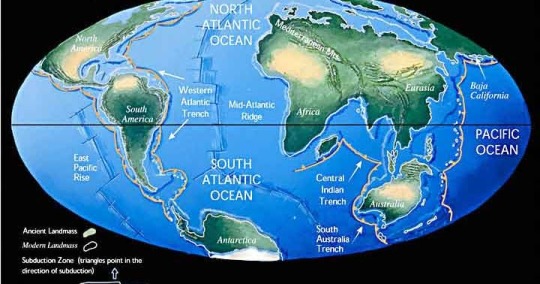
Three new moons discovered around Uranus and Neptune
Astronomers have discovered three tiny new moons orbiting the ice giants Uranus and Neptune.



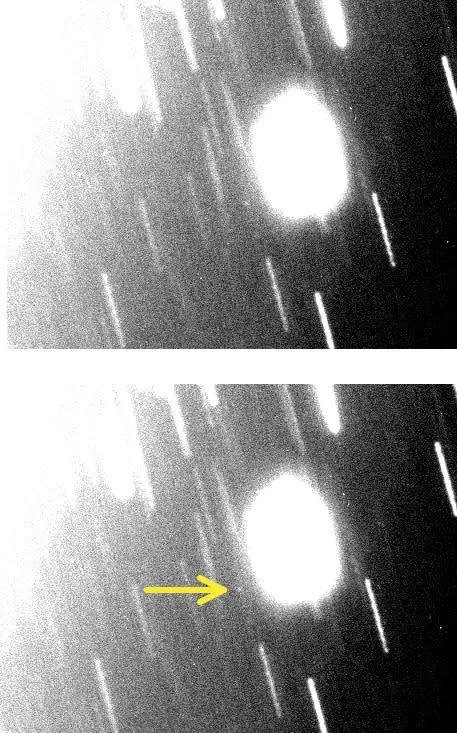
The Science Report
A new study claims zinc could help some people with cystic fibrosis.
An investigation has solve the 120 year old maritime mystery of the SS Nemesis.
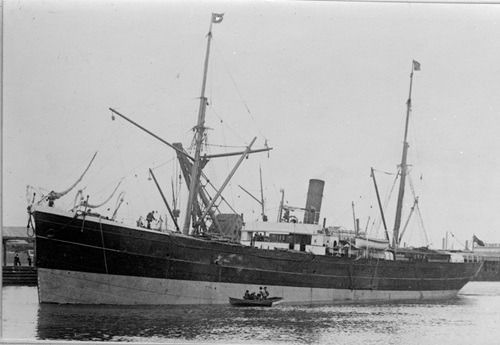



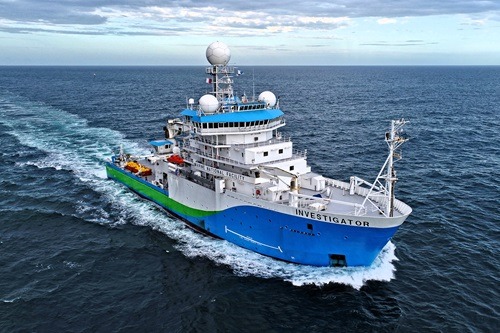
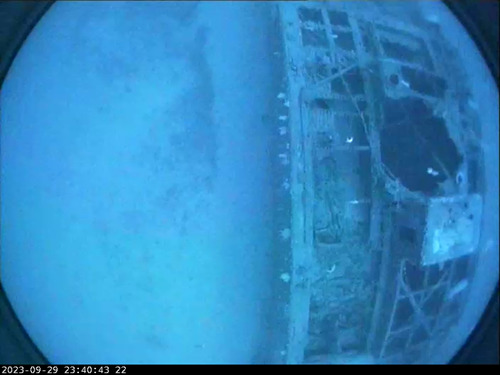
A new study has failed to find any clear link between the weather and back, knee or hip pain.
Skeptics guide to the truth behind the Amityville Horror
SpaceTime covers the latest news in astronomy & space sciences.
The show is available every Monday, Wednesday and Friday through Apple Podcasts (itunes), Stitcher, Google Podcast, Pocketcasts, SoundCloud, Bitez.com, YouTube, your favourite podcast download provider, and from www.spacetimewithstuartgary.com
SpaceTime is also broadcast through the National Science Foundation on Science Zone Radio and on both i-heart Radio and Tune-In Radio.
SpaceTime daily news blog: http://spacetimewithstuartgary.tumblr.com/
SpaceTime facebook: www.facebook.com/spacetimewithstuartgary
SpaceTime Instagram @spacetimewithstuartgary
SpaceTime twitter feed @stuartgary
SpaceTime YouTube: @SpaceTimewithStuartGary
SpaceTime -- A brief history
SpaceTime is Australia’s most popular and respected astronomy and space science news program – averaging over two million downloads every year. We’re also number five in the United States. The show reports on the latest stories and discoveries making news in astronomy, space flight, and science. SpaceTime features weekly interviews with leading Australian scientists about their research. The show began life in 1995 as ‘StarStuff’ on the Australian Broadcasting Corporation’s (ABC) NewsRadio network. Award winning investigative reporter Stuart Gary created the program during more than fifteen years as NewsRadio’s evening anchor and Science Editor. Gary’s always loved science. He studied astronomy at university and was invited to undertake a PHD in astrophysics, but instead focused on his career in journalism and radio broadcasting. He worked as an announcer and music DJ in commercial radio, before becoming a journalist and eventually joining ABC News and Current Affairs. Later, Gary became part of the team that set up ABC NewsRadio and was one of its first presenters. When asked to put his science background to use, Gary developed StarStuff which he wrote, produced and hosted, consistently achieving 9 per cent of the national Australian radio audience based on the ABC’s Nielsen ratings survey figures for the five major Australian metro markets: Sydney, Melbourne, Brisbane, Adelaide, and Perth. The StarStuff podcast was published on line by ABC Science -- achieving over 1.3 million downloads annually. However, after some 20 years, the show finally wrapped up in December 2015 following ABC funding cuts, and a redirection of available finances to increase sports and horse racing coverage. Rather than continue with the ABC, Gary resigned so that he could keep the show going independently. StarStuff was rebranded as “SpaceTime”, with the first episode being broadcast in February 2016. Over the years, SpaceTime has grown, more than doubling its former ABC audience numbers and expanding to include new segments such as the Science Report -- which provides a wrap of general science news, weekly skeptical science features, special reports looking at the latest computer and technology news, and Skywatch – which provides a monthly guide to the night skies. The show is published three times weekly (every Monday, Wednesday and Friday) and available from the United States National Science Foundation on Science Zone Radio, and through both i-heart Radio and Tune-In Radio.
#science#space#astronomy#physics#news#nasa#esa#astrophysics#spacetimewithstuartgary#starstuff#spacetime
7 notes
·
View notes